My Year in Birding: Checking Back in with Nature
Photos by Josh Jackson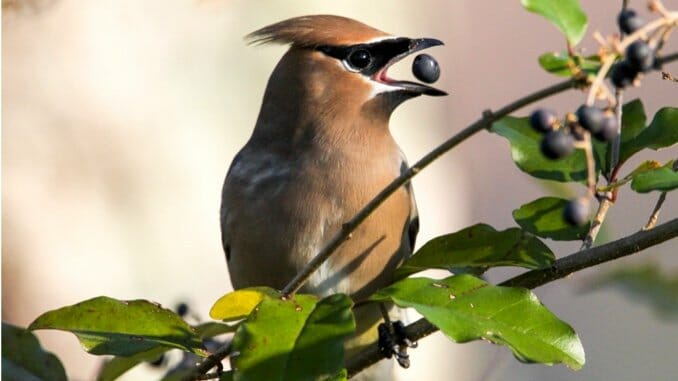
Every single day for the past year, I’ve seen birds. I know this because the eBird app run by the Cornell Lab of Ornithology tells me that my daily checklist streak just reached 365 days—a strange and unexpected factor in a strange and unexpected year. When everything in the human world had been upended, many people looked for solace in nature. I certainly did.
Spring
I’d always been a night owl, but the stresses of the early pandemic had me waking up in the wee small hours too anxious to go back to sleep. At a certain point I started going for early-morning walks. I was also working from home for the first time in 25 years, and it was strange not being around colleagues every day. I set up a desk in our bedroom that looked out onto our small wooded backyard, and I couldn’t help but notice the birds. I was a little surprised to learn that I couldn’t actually identify what I was seeing. Sure, that big blue one was a Blue Jay, the red one was a Cardinal and the brown one bossing everybody around was a Brown Thrasher, the state bird of my native Georgia. But what about the sleek-looking gray one? And is that orange bird in my yard some weird kind of Robin?
Turns out, that was a Gray Catbird and a female Eastern Towhee, two of the seven birds I recorded to eBird on April 23, 2020, unaware that I was beginning a year-long streak. The eBird website informed me of something called the Global Big Day, a citizen-science project that challenged as many people as possible to go look for birds and record as many as they could. It also provided all the “hotpots” in my county where I might encounter the biggest variety of birds. Another app on my phone, Merlin, helped me identify birds that seemed downright exotic to me like a Common Yellowthroat and Great Crested Flycatcher. I was hooked.

A week later, I got a call from my brother that my dad had fallen in the driveway taking out the trash bins and was in the hospital. My parents had just moved away from Atlanta to the coast of South Carolina near my brother’s family. We were as scared about his potential exposure to Covid as we were his hip, but I ended up staying with my parents for a week to help with his initial rehabilitation. While I was there, my brother, who’s a biology professor and a birder himself, showed me some of the spots in and around Beaufort, where you could see spectacular birds like Painted Buntings, Mississippi Kites and Yellow-throated Warblers.
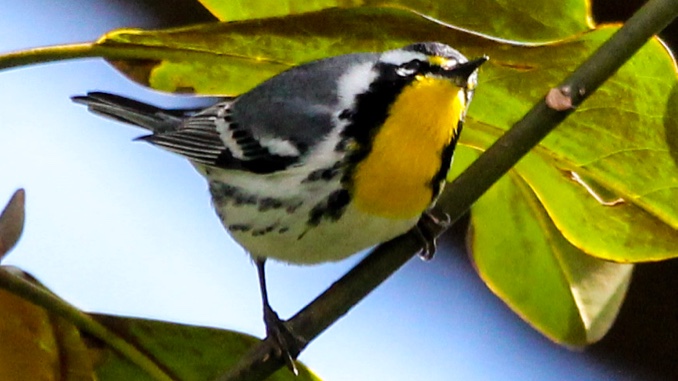
When I got back home, I started going down the list of hotspots, which also opened my eyes to how many cool places to trudge through the forest could be found all around my own city of Atlanta. Protected wetlands like Constitution Lakes and the Clyde Shepherd Nature Preserve. Miles of trails along the Chattahoochee and the South Peachtree Creek. Woodland lakes at Lullwater Preserve and Henderson Park. During one outing towards the end of spring, I encountered another strange and wonderful species—local birders.
There’s a fairly large community of bird enthusiasts in Atlanta, and they quickly adopted me into their fold. It was the tail end of spring migration, and a large group of people with binoculars and cameras at Henderson Park in Tucker were searching the brush for a Connecticut Warbler, a rare visitor to our state that had been seen earlier in the day. I gave up after a while and took a walk around the lake. When I got back, the crowd had moved on, but I spotted a little bird hopping around the edge of the woods. I called over to some other birders who confirmed it was indeed the Connecticut Warbler. Seeing a new bird—a lifer, in birder-speak—brings a nerdy sense of accomplishment, one more for a list. One of the birders invited me to a text group for rare bird sightings so I’d know when and where unusual birds could be found.
Summer
When summer came, I bought a gigantic lens. The last camera that I had regularly used was in my college days, and it predated digital cameras. But my wife lent me her camera body, and I remembered enough from those photojournalism classes to start snapping photos of the birds I was seeing. Rather than turning my Instagram account into a constant stream of birds, I started a separate account with the goal of posting 100 different species of birds in 100 days. The boardwalk at Constitution Lakes became my favorite spot in the city, and on my morning walks I’d photograph Pileated Woodpeckers, Belted Kingfishers and Yellow-crowned Night-Herons. Being out in the woods meant I was also encountering deer, chipmunks and rabbits, even the odd beaver and, once, a pair of otters diving down for crawfish. It also gave me time to process what was going on with my family, with my work, with the pandemic and the political world. I began to realize just how much a constant stream of news, of doom scrolling, of TV shows and podcasts had crowded out time for simple contemplation and peace.

I was waking up much earlier than I ever did before the pandemic—basically trading a couple extra hours of TV in the evenings for 90 minutes in nature in the morning, and it felt like the deal of the century. Instead of two more episodes of Legends of Tomorrow, I’d watch my own live nature documentary, seeing an Osprey dive for fish or Swallows scooping up tiny flying insects above the water. Even my backyard was not without drama, as I caught a Cooper’s Hawk out of the corner of my eye while I was working, just in time to see it snatch a male Northern Cardinal off the feeder and fly off with the smaller bird in its talons.
I learned to identify the songs of most of the common birds that spent their summers in Atlanta, and some of the uncommon ones I hadn’t yet seen, like the Yellow-billed Cuckoo, whose distinct call I’d heard from afar, but had never been able to spot. Finally, I caught a glimpse of the large, long-tailed bird towards the end of summer, just before they would all migrate down to South America for the winter.
At the beginning of September, an old friend of mine who works for the state’s Department of Natural Resources invited my brother and me down to the coast to visit an uninhabited island and help him with his survey of the birds who live there. We saw literally thousands of Red Knots, Western Sandpipers and Brown Pelicans, along with gorgeous birds I’d never seen before like Reddish Egrets, American Avocets and American Oystercatchers. I got to photograph Piping Plovers with bands around their ankles indicating that they’d been captured by a scientist in order to track their movements—to help us better understand and better protect these threatened birds.
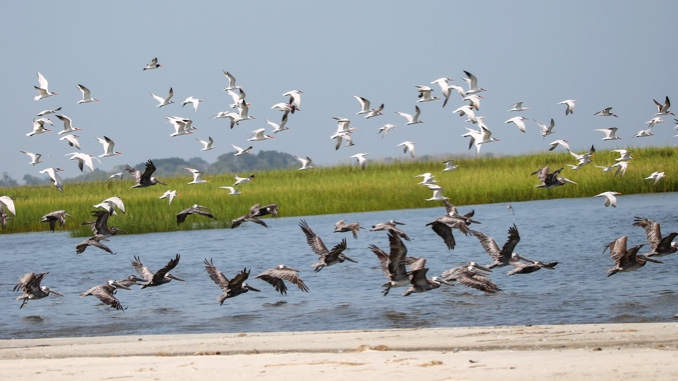
All of the nearly 800 checklists I’ve submitted are part of a database that can be accessed for biologists around the world to use in their research. The eBird app is part of one of the largest community science projects in history with more than 8 million checklists submitted last year—and more than 900 million bird sightings reported since its launch—and it’s satisfying knowing that my walk in the woods might play a tiny role in our collective understanding of the natural world.
Fall
The pandemic changed a lot of plans, including my friend Jeff’s trip to hike Mount Kilimanjaro for his 50th birthday. Instead, he invited three of us to join him on a September trip out to Colorado to hike the state’s tallest peak, Mount Elbert. We all quarantined and got tested for the virus before jumping in an RV and driving straight through the night. We arrived in Boulder in time for a stroll around the lake next to Avery Brewing Company while we waited for it to open. Our trip mostly consisted of hiking and drinking great beer, but my friends were also very accomodating to my new hobby, and I was able to add some Western birds to my life list, while also climbing my first 14’er.
Our campsite at the foot of the mountain couldn’t have been more idyllic. The clear, cold waters of Elbert Creek ran right past the camp with tall Aspens on all sides except for a golden meadow that provided prime viewing of our remote home for three nights. Sitting in our camp chairs, I watched an American Dipper, our country’s only aquatic songbird, dashing its head into the water for insects and then swimming. We were visited by Stellar’s Jays, Canada Jays and Mountain Chickadees. After dinner, I walked out onto the pebbled-shore of the creek and turned off my flashlight. The Milky Way stretched above with remarkable brilliance. With my binoculars, I could see the moons of Jupiter and the flat disc of the Andromeda galaxy. I realized how life-affirming it was to immerse myself in nature.

We got up at 5am the next morning and arrived at the trail head shortly after, so the first part of our hike was in darkness. We walked six miles and 4,500 feet in elevation to the highest point in Colorado. And then six miles and 4,500 feet back down. Along the way, I saw a pair of Horned Larks, a Yellow-bellied Marmot, two false peaks that I thought were the top and the most gorgeous 360-degree view I’ve ever encountered. The Canada Jays would follow us for long stretches, and at one point I offered one a cashew. The beautiful black-and-white bird flew right to my hand to take it. The highly intelligent members of the Corvid family, along with crows and ravens, knew to look for kindness from strangers.
I crashed early that night and slept 11 hours until dawn, refreshed and ready to search out the lake I’d seen near our campsite from the mountain above. Emerald Lake it’s called and is worthy of the name, a crystal clear lake reflecting an Aspen Forest with the snow-capped peak of Mount Elbert above. I startled a couple of otters when I arrived. As I walked around the lake, a family of Pygmy Nuthatches flew into the tree right next to me. Then I heard a squeak and found my first-ever Brown Creeper climbing a nearby trunk. For the next half-hour it was bird after bird coming down to the trees by the shore—Orange-crowned and McGullivrey’s Warblers, Dark-eyed Juncos, Chipping Sparrows and some kind of flycatcher I’d never seen before. I went back to our campsite to get some coffee and the rest of my crew, and we spent a glorious day relaxing at the lake and recovering before our next big hike, Wheeler Peak, the highest point in New Mexico.
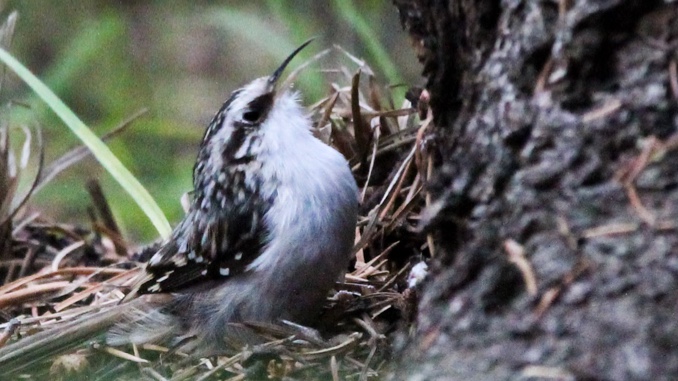
By the time I returned home, fall migration was in full swing, and if I’d missed most of the itinerant visitors in spring, I was seeing them now. I signed up for Georgia Audubon’s Master Birder class, learning not just how to identify the birds, but about their behavior and ecology. I passed my 100-species goal for the Instragram project and got to 150 birds in 150 days on Dec. 12 thanks to a wayward Mute Swan making itself at home on a tiny lake next to the Gwinnett County Police Academy. An awkward conversation with a couple of officers about why I had a telephoto camera in their driveway was worth it.
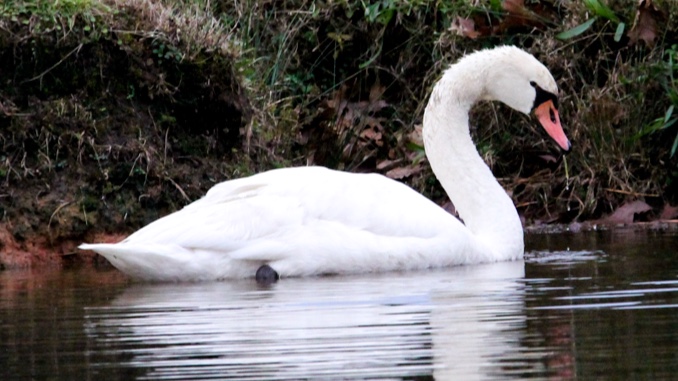
Winter
A global pandemic, murder hornets, a second presidential impeachment—2020 was full of surprises. One that made a much quieter splash (unless you lived in the south and had a feeder in your backyard) was the irruption of finches. A shortage of food up north sent several finch species and other northern birds much further south than their normal range. For a lot of people that meant having Pine Siskins devour bird food as fast as they could refill it. But for me it also meant the chance to drive to North Georgia to see Evening Grosbeaks.
My first attempt was a quick stop on the Iron Mountain Trail in the Cohutta Wilderness, part of the Chattahoochee National Forest, on the way to a day hike with some friends. We saw several other birders who’d spotted flocks of the bright yellow birds, but they kept getting spooked and we had to leave before seeing the birds. So a few weeks later, I made the decision to drive back up—two hours each way—in search of a bird. I was glad I did.
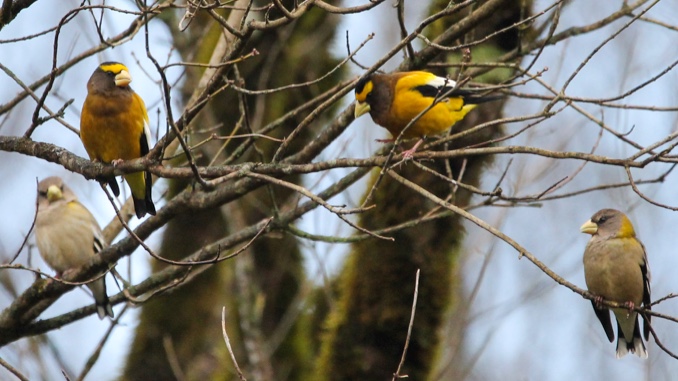
Evening Grosbeak populations are at about 10 percent of where they were 50 years ago, and normally don’t get much further south than Northern Pennsylvania. This flock had been feeding in open fields just south of the Tennessee border. I drove up through the rain, hoping the weather would clear by the time I got there. It was overcast but no longer raining when I arrived, and the trail was empty of people. One by one I checked the fields with no luck. Then as I approached the final field, I could see movement in the grass. When I got close, all the birds flew high up into the trees. I could barely see them against the gray skies. I waited.
After about 20 minutes, they began to fly across the field to smaller trees just as the sun came out. For the next 30 minutes, I was able to watch and photograph these beautiful creatures until my camera battery died.

Back home, I took part in a couple of Christmas bird counts, a tradition that dates back to 1900 when an ornithologist encouraged outdoor enthusiasts to count birds instead of the traditional Christmas bird hunts that decimated avian populations across the country. For me, it was a chance to go birding with others rather than the solitude I’d mostly experienced all year. The first was just south of Atlanta and resulted in seeing my first Loggerhead Shrike, a harmless-looking bird until you come across a thorn bush or barbed-wire fence full of its kills, which can include insects, lizards, other birds or even small mammals. It will impale its prey like shish kabobs, saving its meals for later. The second was all around my home, including my local park, which had late last year become something of a destination for birders across Atlanta.
The city of Decatur had purchased a former Methodist children’s home and converted the land for public use. Legacy Park, a 77-acre park with a pond, wetlands, grasslands and forest, is just two miles from my home. One night in early March, another local birder spotted an unusual owl after sunset, and the next morning several of us were up at dawn to see if we could find it again. That was the first time I ever saw a Barn Owl, and she became a minor celebrity in the city, complete with paparazzi lined up every dusk and dawn for two weeks.
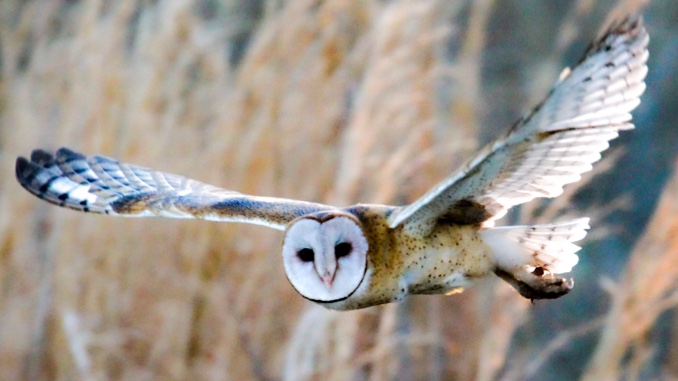
Back to Spring
This spring I got to return to South Carolina to visit my parents now that we’re all vaccinated, and my brother and I took a few morning trips around the eastern part of the state. We visited Beidler Forest, a protected swamp with several Cypress trees that are more than 1,000 years old. We got to watch researchers there capture bright yellow Prothonotary Warblers in mist nets so they could band and release the birds. And we saw one of the coolest raptors I never knew existed—Swallow-tailed Kites, huge acrobatic birds who feed on dragonflies and other flying insects without bothering to land.

The pandemic changed us all in a myriad of ways. Some found a new love of cooking or baking bread. Some dove into reading and plowed through the stack of books that had been mounting on the bed stand. And many of us reconnected with a love of nature, spurred on by a little bit of knowledge about birds. Last Friday, after yet another Zoom meeting, I took a moment to notice what was going on outside my window. And started a checklist for day #366.
Josh Jackson is the co-founder and editor-in-chief of Paste Magazine. You can follow him on Twitter @joshjackson or @atl_birds and on Instagram @atl_birds. Or you can just find him in the woods around Atlanta.







































